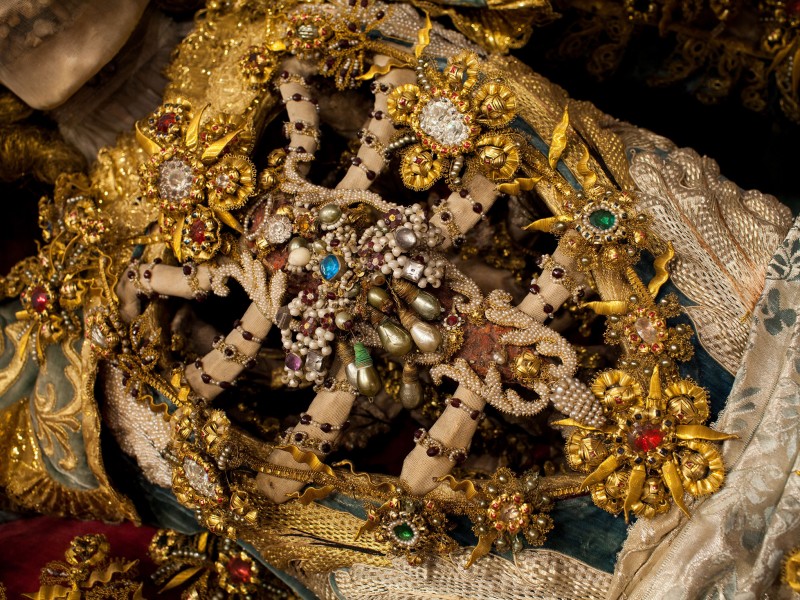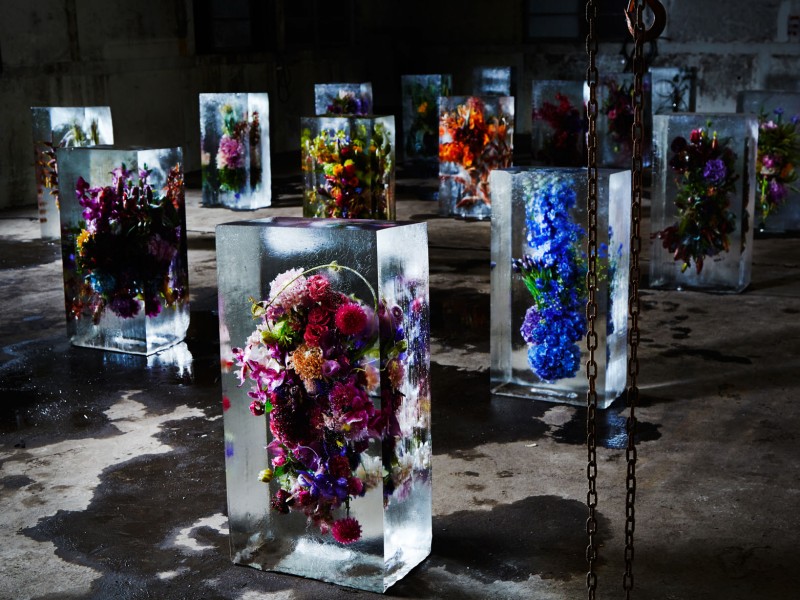“Painting,” explains Johan Van Mullem, “is a mix of intuitions, memories, vision. Our consciousness and rationality are so small and poor compared to all the things our eyes, ears and heart record each second.”
The statement, grounded in the supremacy of effect over reason, encapsulates much of Van Mullem’s creative oeuvre, devoted to deeply personal ‘imagined’ portraits and figures derived primarily from the artist’s own subconscious. The notion of a portrait in which the features are intentionally obscured is a peculiar one. That a genre conventionally so tied to ideas of specificity and recognisability should shroud the very physical structures conventionally perceived to characterise it, is in itself radical, bespeaking a profound sense of emotional ascendency.
Van Mullem’s monumental portraits are fluid, transitory, evocative things. Rendered in generously applied oil-based ink on unprimed board, they retain a quality of wetness, an uncanny sense that their surfaces are in fact still shifting. Van Mullem remains preoccupied with the idea of movement and with light and shadow, and the fluidity of his medium lends itself to the exploration of these inherently transitional themes. More than this, his portraits function as meditations upon the psychology of the imagined sitter and of the artist himself; evocative glimpses into a private, interior world that a literal rendering of features cannot convey alone.
In some works, the face of the subject appears to vaporise before the viewer’s eyes, merging into the darkened canvas in wisps of fleshy smoke. In others, features swirl together in a multi-coloured vortex or tornado, chaotic yet oddly contained in the residual form of the head. There is a luminous quality to the portraits, whether focused in halo-like bands or pin-pricks or flooding the image in a diffuse glow. The drama of these effects is compounded by the size of the portraits. With each canvas measuring over a metre, the kaleidoscopic faces that emerge from them are many times life-size. The depiction of psychological intimacy on a monumental scale has become something of a leitmotif of Van Mullem’s practice; however, the effect is not a thing that the artist has consciously calculated or considered. He writes, “emotion is independent of scale. A detail can provoke a storm.”
Van Mullem began making portraits as a 5-year-old, and the fascination has remained. From his early black and white figurative depictions of elderly faces rendered in Chinese ink, he arrived at a multi-coloured, increasingly abstract treatment of his subjects. It is, he explains, an evolutionary process, a combination of collective memories and personal history: “There is no intention to paint the present or the reality, therefore I don’t need any model to be inspired or to copy. A painting is an open door to personal introspection. A mirror that shows the ‘other side’.’’ The role of memory is key here, infused also with a powerful sense of place.
The son of Flemish parents, Van Mullem was born in Isiro in the Democratic Republic of Congo. His diplomat father was regularly reposted, and so the family moved from country to country. From the age of seven to fourteen, Van Mullem lived in Tunisia, and he has spoken extensively about the importance of this period in the formation of his artistic imagination and practice. “Since that wonderful time, my heart has been there. I have been forever torn between my Flemish roots and that marvellous Mediterranean culture. No other country has had such an impact on me. It was there that I began to draw, to fill my notebooks, and I have never stopped.” The notion of compulsion arises repeatedly in Van Mullem’s accounts of his work; producing visual manifestations of his internal world and its external influences is, it seems, intrinsic to his sense of self.
Yet despite the artist’s early and continuing passion for painting, Van Mullem’s parents were not initially supportive of his artistic ambitions, believing the career path to be too insecure and insubstantial. In accordance with their wishes, he studied to become an architect, but never actually practiced. He describes his subsequent professional life as chaotic, moving from job to job to support himself, while remaining privately obsessed with the desire to become a painter. Becoming increasingly withdrawn, he began to draw in secret with a kind of fraught passion; his focus always upon the face, increasingly abstracted and suggestive of dark emotional struggles and complexities.
In mood and form, his works are evocative of both African and European traditions. There are, in their shadowy, organic pigments and expressive simplification, echoes of the African masks which the artist encountered during his childhood and adolescence in the Congo and Tunisia. Equally present are the haunting contemplations of Rembrandt, Goya, Blake, Munch and Bacon, whose dark meditations on human interiority seem to provide a kind of ancestral trail for Van Mullem’s portraits. Yet Van Mullem remains reluctant to ally his works to any particular movement, articulating instead an ideal of emotional expression independent of history or nation: “All the movements are different ways to go to the same place. Somewhere inside of ourselves where you can discover the universal dimension.”
The portraits are at once psychological in their subjects and inescapably corporeal in their surfaces. Van Mullem’s palette is consistently organic, calling to mind primordial soup or bodily fluid. The works have a sense of the primaeval about them, of evolution, and perhaps also degeneration. They seem, in their extraordinary, metamorphic forms, to address the shifting nature of the species as well as the shifting psychology of the individual. Van Mullem acknowledges this sense of broader transformation, but maintains that any formal ‘comment’ is unintentional: “I do feel my subject as something universal and timeless. But there is no intention in my work. It is based on energy and feelings. Therefore I try to stop the intervention of the brain.”
For an artist so committed to spontaneous expression, Van Mullem maintains a surprisingly disciplined schedule. The morning, he explains, is for reflection, emails, shopping and professional appointments. He arrives at the studio around 1.00pm and works until 7.00pm. Yet while the programme is structured, the creative process itself is far more variable. The energy of the day, he says, determines the format of the work and the colours to be used. Inherent within his process is an elusive notion of inspiration, and with it that eternally complex, subtle ideal of making the intangible tangible, of translating feeling into solid form.
Van Mullem has recently completed a sculpture period, experimenting for the first time with large three-dimensional works. Exploring similar themes of human psychology and emotion, these are created in a variety of mediums, including clay, bronze, polyester and plaster. It is a privilege borne of critical success that he is now able to experiment so widely. After 50 years of artistic longing, he has arrived at a point of relative expressive freedom, and his continuing gratitude for this is palpable.
For all of the frustrations of his youth, Van Mullem feels no regret about his path to artistic achievement, explaining, “It’s a long and difficult way, but when you have the chance to ‘accomplish’ yourself, you understand that everything you went through was necessary. I understand it is not the way which is difficult, but the difficulty that is the way.”
For more visit www.johanvanmullem.com
Related Features
-
23
-
-
-

